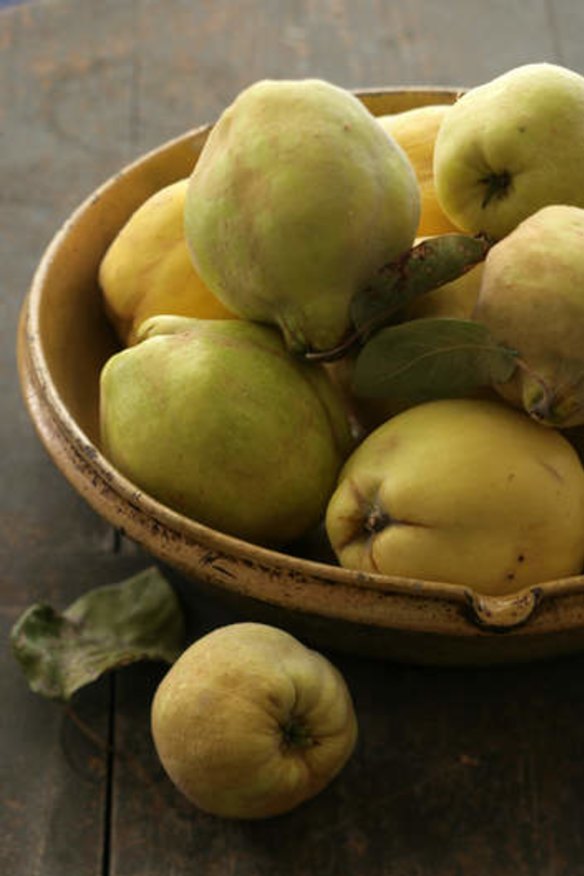Golden oldie

Quince trees can look quite misshapen and the oblong-shaped fruit quite strange to a newcomer, but quince has been grown for millennia across the Mediterranean and southern Europe, and its significance is indicated by its use as a symbolic fruit during marriage ceremonies in the Greek empire. This is the season for quinces. As the fruit ripens and becomes really golden on the tree, it will develop an aromatic fragrance, and it is transformed when cooked. When you poach quince, it turns pink. It is a wonderful aromatic fruit with ice-cream.
Quince trees are a good option for Canberra, as they grow well in heavier soils, surviving occasional wet winters and springs.
They are slow growing, so you won't usually get a crop for five or six years, but it's worth the wait. We initially planted the well-known smyrna variety and have added the ''champion'' and ''fuller'' varieties to spread the harvest times. The spring flowers around the end of September are a delicate white colour. Then, at the base of the flowers, the little bulbous fruits begin to grow. In a good season, quinces can be 500 grams.
Quinces are partially self-fertile, so you can produce a crop from a single tree. However, like with other fruits, planting more than one tree in the garden will increase yields.
Quinces have few disease problems, which is good for backyard gardeners. However, despite the fruit being quite hard, quinces can be attacked by fruit fly as they mature from late March to early May. Pray for long, cold, frosty winters. Heavy frosts are one of the best natural controls for fruit fly.
Quinces have a high pectin content, so they are excellent for making quince jam and quince jelly. They are also excellent in pies and tarts, and as quince paste. Because they are a very hard fruit, be careful when peeling and chopping.
This autumn, the skin on our smyrna quinces is thinner, so we have been able to use vegetable peelers.
After you quarter the quinces, lay each piece on a chopping board and remove the core by cutting downwards with a sharp kitchen knife.
Making quince jelly takes some time but the product is worth the effort. The jelly will be an attractive pinkish red and have a beautiful delicate flavour. When bottled and well sealed, quince jelly will last for up to a year. After last week's story on our mixed pumpkin harvest, readers Roger and Kate Brown, of Harrison, report that they harvested 11 Queensland blue pumpkins on a single vine, with three of the pumpkins weighing six kilograms each. The plant sprouted from vegetable scraps that had been dug into the garden in the previous season. Compost heaps are the best place for growing a bountiful crop - if you can dedicate the space - and provide deep, rich humus and nutrients for the pumpkin roots.
Owen Pidgeon runs the Loriendale Organic Orchard near Hall.
This week
■ Plant winter legume crops of peas and broadbeans, or plant a green manure crop, which can be dug in later. Green manure crops are fast-growing crops that combine legumes and cereal grains to improve the soil by building up the organic matter and increasing nitrogen levels. You can use broadbeans, field peas, fava beans and fenugreek, barley oats and sorghum. This is the natural way of building up humus levels and boosting nitrogen levels.
■ Clean up the old vegetable plants and place all remains of vines and plants on to a new compost heap. Cut up larger-leafed plants such as sweet corn stalks and bean vines, to speed decomposition. The one exception is old, dead tomato plants - dispose of them and do not place them into your compost heap.
■ Start preparing garden beds for winter planting of berries.
The best recipes from Australia's leading chefs straight to your inbox.
Sign up